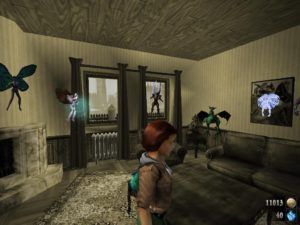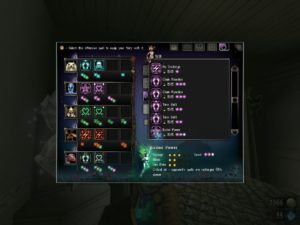Faerie Solitaire: Final Thoughts
This has been a very busy time for me, as you might have guessed from my lack of posts. It isn’t really the case that I haven’t had time to play games, but I haven’t had time to play games and blog about them. And so I’ve got about a third of the new achievements in Half-Life 2, which I got off the Stack three years ago when it didn’t have achievements yet, and I’ve gotten maybe a quarter of the way into the latest Gemcraft sequel, Gemcraft Labyrinth, which isn’t on the Stack because I haven’t paid for it. Gemcraft Labyrinth is a game you can play it for free on the web, but certain optional features are locked until you pony up some dough, and the UI pointedly reminds you of this every time you begin or end a level, so it’s likely that I’ll break down and pay at some point.
Still, I can’t ignore the Stack completely, can I? And so I spent a little time this weekend polishing off the game I was closest to completing, Faerie Solitaire. There are still two Challenge levels that I’d like to complete at some point, and I’m missing enough of the fairy pets that I doubt I’ll ever bother to catch ’em all. 1Update: See the icon for the “collect each pet’s adult form” achievement (it’s at the very bottom). That does not describe me right now. (It’s still not clear to me if the eggs that the pets hatch from are granted at random, or if they’re under specific spots in specific levels. The latter would make hunting the last ones down more appealing.)
I don’t really have a lot to say about the game that I haven’t already said. The final levels didn’t reveal anything new or transform gameplay in any unexpected ways, especially considering that I had already purchased all the power-ups. When you finish the last level, you get to passively listen to the hero describe confronting an evil wizard, and then there’s a sequel hook. Which has got me speculating: what would I put in a sequel if it were up to me?
I’d want to elaborate on the game mechanics, obviously. I felt that the gameplay didn’t even really support a game of this length, so definitely I wouldn’t want to keep things the same in a sequel. Probably I’d try to figure out some way to make the layouts more relevant, less prone to devolving into a bunch of independent columns.
I’d want to do more with the pets. At the very least, I’d give them spot animations to make it seem more like you’re collecting creatures rather than portraits of creatures. Also, they’d be more interesting if your choice of current pet had some kind of effect on the game beyond bringing it closer to its adult form. Certain pets could give you bonus gold, for example, or turn additional cards face-up. Even if it’s undesirable for pets to affect the main game this way, they could at least affect the pet system: pets could make it more likely to find specific resources. There’s all sorts of unused potential here.
Finally, I’d want to give the fairies more of a voice in the story. Now, the story of Faerie Solitaire isn’t the most relevant part of the game. It’s pretty much just tacked on. But it’s tacked on poorly. We have all these fairy pets, we have constructions in Fairyland, we have cards with pictures on them, we have fairies as an ostensible unifying theme. I’d want to see this stuff become relevant in the story. In what we have, the story is instead about a journey to defeat an evil wizard, with fairies as a mere MacGuffin, not as characters. Fairies have the potential to guide the hero or trick him, to set quests, give hints, keep secrets, misunderstand your intentions, cast spells that help or hinder the player. Zanzarah, still the best fairy-themed videogame I’ve played, felt a lot more like a story about fairies, even though it didn’t do much more with them than Faerie Solitaire does — the fairies there are mainly treated as tools, not characters, and never really have agendas of their own. But at least it has wild fairies that attack you spontaneously, which makes them seem self-willed.
| ↑1 | Update: See the icon for the “collect each pet’s adult form” achievement (it’s at the very bottom). That does not describe me right now. |
|---|
 Comments(0)
Comments(0)

